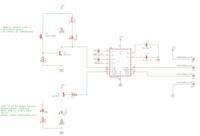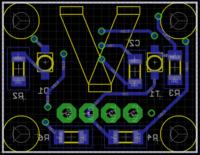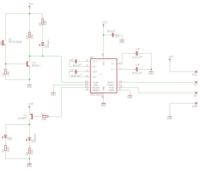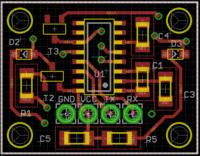JefPatat
Newbie level 5
Hi all,
I have made the bellow schematic and attached a 12m long cable. When the cable is connected to the PC I get a nice signal but I'm observing small spikes on the RX line when the the PC is disconnected.
First question: is this because of capacitive coupling between the wires in the cable?
The circuit is receiving an infrared message every couple of seconds. The result is that the small spikes cause the yellow LED to light up. I haven't measured if the IR led emits but it doesn't look nice.
Second question: is there a remedy to what I'm observing? It's not really causing problems I think but it shouldn't be I think.
thanks in advance,
Jef
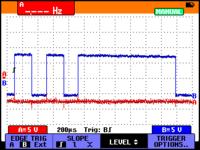
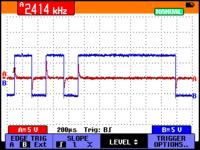
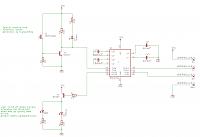
I have made the bellow schematic and attached a 12m long cable. When the cable is connected to the PC I get a nice signal but I'm observing small spikes on the RX line when the the PC is disconnected.
First question: is this because of capacitive coupling between the wires in the cable?
The circuit is receiving an infrared message every couple of seconds. The result is that the small spikes cause the yellow LED to light up. I haven't measured if the IR led emits but it doesn't look nice.
Second question: is there a remedy to what I'm observing? It's not really causing problems I think but it shouldn't be I think.
thanks in advance,
Jef



